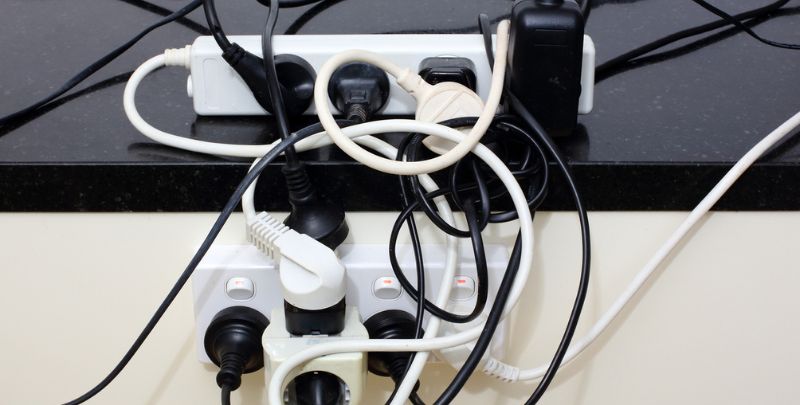Electrical Hazards to Look Out For

There are potential electrical hazards and safety concerns in any home. In the past, countless home DIYers would have worked on their home without adhering to relevant regulations.
Even today, builders often cut corners, while there’s always a chance of outside influence or damage.
Thankfully you’re not stuck in a sinking ship. The shoreline is within site as these hazards can be reduced or removed by being aware and taking sensible steps to eliminate the danger. Now, the best way to address electrical problems is with a fully qualified electrician, but just having the knowledge of what to look out for is crucial.
You can take charge. Here are eight potential electrical emergencies to beware of and hopefully avoid.
1. Defective Wiring
Good quality wiring that conforms to safety standards is vital. Substandard wiring can increase the risk of fire, power surges, arc faults and other problems. Have a fully qualified electrician check your wiring on a regular basis to ensure it is safe and up to standard. If you’re moving into a new property, have it checked out.
2. Failing to Trip
If your circuit breaker fails to trip, it can be a sign of an overloaded circuit, low voltage, poor wiring, or an outdated circuit breaker (the average circuit breaker lasts around 35 years). It could be that the circuit breaker was installed incorrectly. A qualified electrician should be consulted.
3. Power Outage
A power outage can have a dramatic effect on your home, unless your system is backed up by solar power. Most power outages are short-lived, lasting a matter of hours. But some outages can last for days, weeks or months. Outages can be caused by storms, heavy rain, and excessive hot or cold weather which causes grid failure. If you’re without power for an extended period, always contact emergency services or a qualified electrician and never try to fix the problem yourself.
4. Burnt Electrical Outlets
If your outlets are showing brown stains, it can be the sign of serious problems. The outlets could be on the verge of catching fire at any time, because the stains indicate that circuits are overloaded. Do not plug anything into a burnt outlet and be sure to call a fully qualified electrician.

5. Extension Cords and Power Boards
Extension cords should be fixed in place where possible to reduce the chance of tripping. Don’t use extension cords or power boards for too many appliances at once. Don’t use an extension cord as a permanent substitute for extra power sockets and don’t “piggy back” power boards by plugging one into another.
6. Old Appliances
If you are still using old appliances such as televisions and lamps, beware of frayed cords and getting cords tangled with other appliances. You could be putting yourself at risk of an electric shock. Make sure all appliances are properly grounded. Where possible replace old appliances with more modern counterparts.
7. Babies and Toddlers
Take extra measures to protect babies and toddlers, who are naturally inquisitive about exploring the world. Unprotected sockets can lead to serious injury. Any accessible electrical outlet at their level should be replaced with child-safe power points.
8. Water and Liquids
Always be wary of electrical appliances near water. Keep them away from sinks, bathtubs, showers and taps. Never handle electrical appliances with wet hands. Never pour water on an electrical fire. Always keep a fire extinguisher onsite if you’re concerned about electrical fires.
One of the best ways to reduce the risk of electric shock is to install a safety switch, which should be done by a qualified electrician. Fires caused by electrical faults are common and early warning signs are usually present. Homeowners should heed the warnings before a problem becomes an emergency and your home, or lives, are put at risk.
Please note: This information is provided for advice purposes only. Regulations differ from state to state, so please consult your local authorities or an industry professional before proceeding with any work. See our Terms & Conditions here.